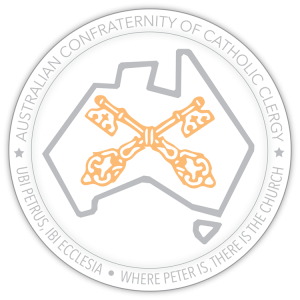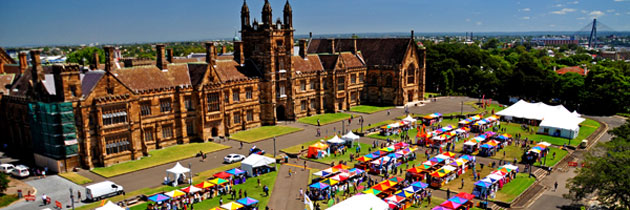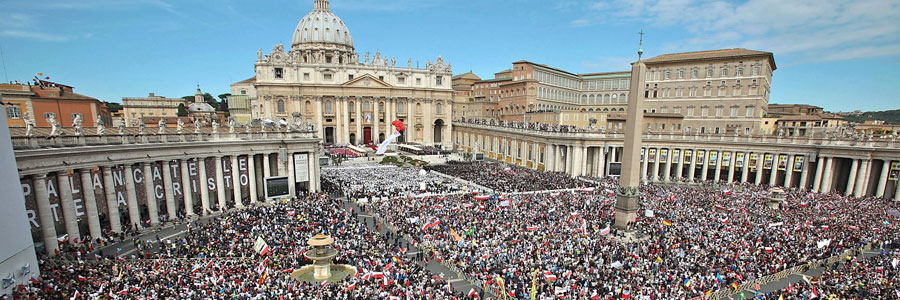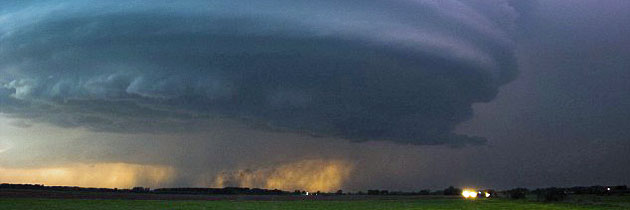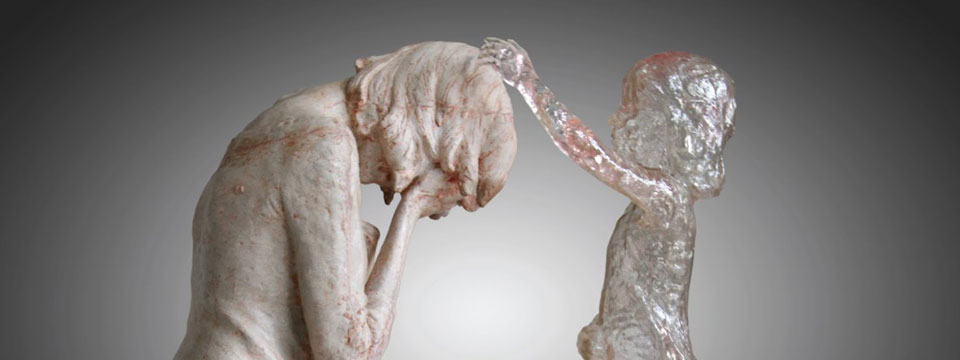Catholic chaplaincy at the University of Sydney and UTS
It has been my privilege to be chaplain to the University of Sydney and UTS since January 2011. Once the Dominican Province accepted the Cardinal’s invitation, I was presented to and recognised by both universities as the visiting Catholic chaplain for more than 100,000 staff and students. The chaplaincy and the model we follow have much to offer the wider Church in the course of the New Evangelisation.
Working together
The direction and administration of the university chaplaincy are largely in the hands of our lay staff. They do a superb job of keeping our presence on campus professional as well as pastoral. On any number of occasions I’ve been thankful for the gracious assistance and friendly leadership offered by members of the team. The chaplaincy is not a parish and its priest doesn’t have the pastoral care of souls in the same way a Parish Priest does, which means that the activities of the chaplaincy can be much more a collaborative effort among a team of lay and consecrated people with the priest chaplain.
There have been a good number of priests who have been involved in the new model of chaplaincy since 2002. Fr Kevin Muldoon and Fr Dominic Murphy OP are still well known and loved by the students with long memories. The chaplaincy staff gratefully remember the contribution of the various supply priests who are and have been involved over these last ten years since the re-founding. There is no question that continuity of priestly presence is a significant factor in the success of Sydney’s university chaplaincy. I am proud that the Dominican friars have been involved in tertiary chaplaincy since our arrival in Glebe in late 2004.
Ours is largely a weekday chaplaincy, because the students are back in their parishes to fulfil their Sunday obligation. This presents its challenges, because the university and its chaplaincy are responding to a commuter culture among students. They come to the campus for lectures, tutorials and research, and could be unseen otherwise.
Religious fatigue
Part of the challenge for chaplaincies is encouraging students to carve out some time for activities which engage their Catholic life. It’s not just the non-Christians who are apathetic. There is a religious fatigue among a growing number of our own people. It’s the post-modern problem: how do you make the indifferent care?
To that end, visibility is everything. And until our new student centre and chapel are built, we have to be particularly attentive to the impression we make on the students. I make every effort to wear the Dominican habit on campus, as did my predecessor, Fr Dominic Murphy OP. Sometimes it’s a shock for them to see Dominicans sisters and a friar in traditional habits. On the same day I was asked: “Are you an actor?” and “Are you a ninja?” and “Are you for real?” No. No. Oh yes! I’ve also been affectionately referred to as The Man-Nun.
Our students can come under the influence of certain sub-cultures, and many have little to offer them other than a mindset. Dark corners of the union building must be the last place on earth where socialism is well thought of. Under these conditions, our chaplaincy proposes Christianity as an all-embracing pattern and promise of life which does not depend on a lens of thought through which the world is viewed but on the Person of the Lord Jesus. We need not advocate social revolution when peace comes from Christ.
Preaching the kerygma
Indifference to Christianity is fuelled in part by religious illiteracy. There would hardly be a week that goes by when we haven’t delivered the kerygma to someone. Happily so, the new evangelisation leads us back to the first evangelisation. The Compendium of the Catechism of the Catholic Church and its popular counterpart YouCat quickly proved themselves indispensable. Traction on social charity and pro-life issues is encouraging, especially as regards the student-driven St Vincent de Paul conference, the largest in NSW with over 300 members, and LifeChoice, a non-sectarian pro-life group started by committed students just this year.
There is a fascination among our people with recovering elements of the Catholic liturgical tradition. While a very small number of the students are interested in the Extraordinary Form of the Latin Rite, a much larger one asks for the use of Latin in the sacred liturgy. The students took about two months to learn Mass XVIII, before it really seemed to become part of them. And weekday Mass still goes for less than 30 minutes. Our next steps are the chanted Alleluia and Mystery of Faith, and making good on students’ requests for Mass celebrated adorientem. The chaplaincy team regularly find themselves encouraging the students in tested forms of piety and devotion. We’re still handing out WYD’08 rosaries like they’re going out of fashion, and I’m involved with the re-emergence of the Angelic Warfare Confraternity for the promotion of chastity in one’s lay vocation.
I’m also constantly aware that I’m a new priest. This December I’ll have been ordained two years. As a first appointment, the chaplaincy can’t be beat. The students love the Catholic Church, they love her priests, and are willing to give us young ones a go. I’m humbled by their forbearance, especially with the preaching at the daily Mass. And they’re homilies in which I think I’ve said little to contribute to the students’ spiritual lives that they tell me they got something from them. Thankfully, the risen Lord takes seriously his responsibility for the Church. We are mere instruments in his holy and venerable hands.
The war, if there is one, is for the poster boards around campus. University policy states we can poster over other posters but not remove existing ones. Often enough, the Catholic society posters for our events on conventional topics with controversial titles are the hook for new faces, and ours are regularly the first targets for being posted over. So, it’s staple guns at twenty paces!
Spiritual direction
This is a good opportunity to mention two strongly emerging features of priestly work among tertiary students. The first is the significant rise in requests for spiritual direction in 2012. We can be grateful for events such as World Youth Day which have provided opportunities for our young Catholics to hang out with priests and religious. They are much more comfortable in clerical company than my own university peers were. One of our students has been given to counting the number of priests she’ll have at her wedding. I think it’s eight at last count! This seems to come from having frequent, casual contact with a priest who is as I say visible and, please God, approachable.
For the vital contribution of our lay staff, the popular idea of the Church is still expressed in the person of the priest. The same can be said for our staff from forms of consecrated life, two Dominican Sisters of St Cecilia and a total of three from the Marian Community of Reconciliation (Fraternas). Among all the good they do, they’re together organising a Nun Run to convents in the Sydney metropolitan area. The beautifully-gentle manner of our consecrated women provides a welcome variety in the approaches of chaplaincy staff members. Our students more frequently know their need of God and the contrasting philosophies of life available to them. Spiritual direction is one way they seek to be strengthened in their resolve to be faithful.
The other feature is the large number of people seeking initiation as Catholics through the chaplaincy. While we prefer our students return to their parishes, enough do not have a programme for new or returning Catholics that our chaplaincy is kept rather busy with this work. We’ve presented nine people for sacraments of initiation in 2012, and are responsible for the catechesis of another six. On campus the Year of Grace is certainly a year of sacramental grace. Some are Catholics returning to complete their initiation, others are seeking full communion with us. We are proud of them all for taking these steps towards a mature Catholic faith.
Every one of our students is discerning their vocation. I was saying to one student just the other day, “You could be married in three years.” We regularly promote events sponsored by the Vocations Office of the Archdiocese, and make vocational literature from various institutes and societies available in public spaces at the chaplaincy centre. And I am delighted to say that more than thirty young people associated with the university chaplaincy have entered priestly and religious formation since 2002.
Doctrine and apologetics
Through public lectures we have a good relationship with the Coptic Orthodox, who are a vibrant group on campus. They are our allies, and many individuals are our friends. A number of our Catholic students encounter the Evangelical Union, the well-financed and organised campus-based group for Sydney Anglicans. These occasional exchanges often lead students to seek formation in doctrine and apologetics, which makes them all the more resilient and fervent in their Catholic life. I am impressed by our students who have stepped forward to participate in public debates with new atheists. Honestly, Catholics going up against new atheists on campus have no contest. Our students are well-formed, spiritually-charged, and keen on evangelisation at an intellectual level.
Our next steps I hope are greater contact with the faculty and staff of the university. We are making good inroads with the students, but less so with those who work on campus. To some extent they are hidden at this time behind the veil of our pseudo-invisibility. Having the Blessed Sacrament in a permanently-designated place makes all the difference to Catholics in a place largely indifferent if not hostile to their faith and morality.
